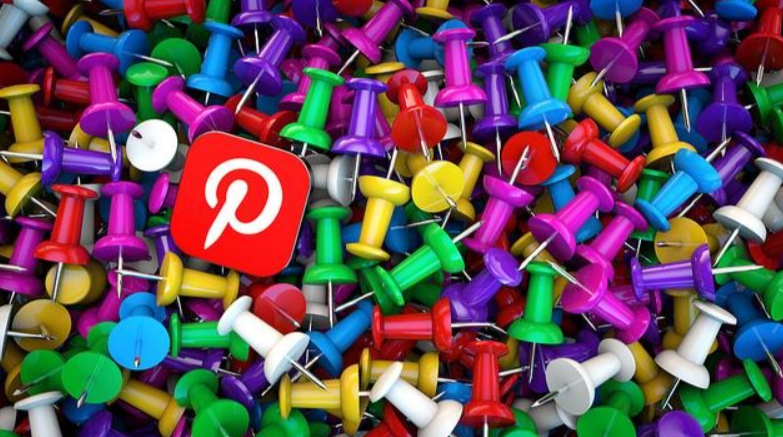How do you sell on Pinterest?
Open a Pinterest Business account
You’ll see that it’s pretty simple to figure out how to use Pinterest. Creating an account is super easy. On the home page, first click on “Sign Up”. A window will pop up and at the bottom you’ll see the “Create a free business account” option. Enter your information and you land on your Business Hub, the Pinterest pro dashboard.
You’ll need to create a business Pinterest account to gain access to advertising and other cool features.
Under “Settings,” you’ll be able to complete your profile. Upload a profile picture (165 x 165 pixels), fill in the “About” section, your business location, enable notifications and connect the account to your other social media profiles.
2. Claim your content
This step is very important because it allows you to see what users are pinning from your site or your other channels (Instagram, Etsy, or YouTube), automatically add your logo to your pins (good for branding), and boost the SEO of your pins in search results.
For Shopify users, it’s really easy to do: Click “Claim your content” in front of the Website line and copy the HTML tag that appears. Go to your Shopify admin > Online Store > Themes, then, on the appropriate theme, click Action > Edit Code > layout section > and paste the line directly under the opening <head> tag. Then save.
3. Tell stories with pins and boards
Storytelling captures attention, creates an emotional connection and changes the way people see you. People buy on emotion, and storytelling is a great way to create emotion. With the power of images claimed by the platform, you can really tell great stories. It’s modern storytelling.
If you just put up pictures of your products, it won’t be enough. 72% of users say they are looking for ideas, so you have to give them contexts in which they can project themselves.
For example, the Pinterest Côté Maison account. They sell subscriptions to their magazine, but they don’t showcase their product. They sell a whole universe, here in spring, with DIY flower crowns, waterfront home tours… in short, selling on Pinterest is about selling dreams. That’s what works.
Investigate what stories appeal to your audience and use that knowledge to fuel your boards. Stay true to your brand, be creative and have fun.
Take advantage of the different Pinterest pin formats to give your stories multiple dimensions:
Classic Pins
Video pins (recommended length of 15 seconds to 1 minute)
Idea Pins (which work like Instagram stories)
Now you can create your first boards and start pinning, giving them the opportunity to find and follow you.
4. Go all out with the images
Visuals are the heart of Pinterest, but it’s also what represents your brand and tells your story. Your images should make people want to share them on other boards.
High quality images at the right size are a must.
Pinterest image formats:
Vertical Pins: 2:3 ratio. (For example, 1000 x 1500 px or 600 x 900).
Pinterest values pins in these sizes. Beyond 1260 px, the image will be cropped.
They work well because they take up the most space. Contrast them with square images (600 x 600) to make your content stand out in the discovery feed.
Make sure your images and especially your site are mobile friendly: remember that the majority of users are on Pinterest via their phones.
Here are some interesting pointers from Pinterest, on what works and what doesn’t regarding product photos.
Lifestyle photos get 18% more engagement than average.
Fashion works best when worn.
Decor photos work best when the focus is on the product, rather than the person.
Hair and beauty photos stand out better against a solid background
DIY products work best when photographed in context.
Standalone images work as well as images with a caption (Canva is great for this)
5. Optimize your Pinterest SEO
SEO matters on Pinterest too. Think about the name of your account, make sure you choose well-descriptive titles and still add details in your pin descriptions. This way, you increase the chances of being found in search engines and therefore, selling well on Pinterest.
Also remember to optimize your images for SEO and name them with keywords before you import them.
Also, when people re-pin your content, they generate links back to your site, which is also great for your SEO.
The more you improve your SEO on Pinterest, the more traffic you generate to your online store, which also improves its SEO. This is the virtuous circle of SEO.
Hence, why you should put all your products and publish as much content as possible on your Pinterest account regularly.
6. Install the “Pin it” button on your site
This button appears directly on the images of your product pages, allowing any user to pin and share them on their own boards. Not only do you facilitate maximum interaction with your visitors, but you also know what is appreciated on your online store.
You can find the instructions to install this button here. But the easiest way is to choose a Shopify theme that includes this feature.
7. Add the “Follow” button
This button informs visitors that you are on Pinterest and takes them directly to your Pinterest pro profile. Install this button anywhere you connect with people: website, newsletters, emails, blogs, pop-ups…
8. Install rich pins
Rich pins allow you to automatically synchronize your product sheets with the corresponding pins. Super handy if you change prices or add a new variant for example.
